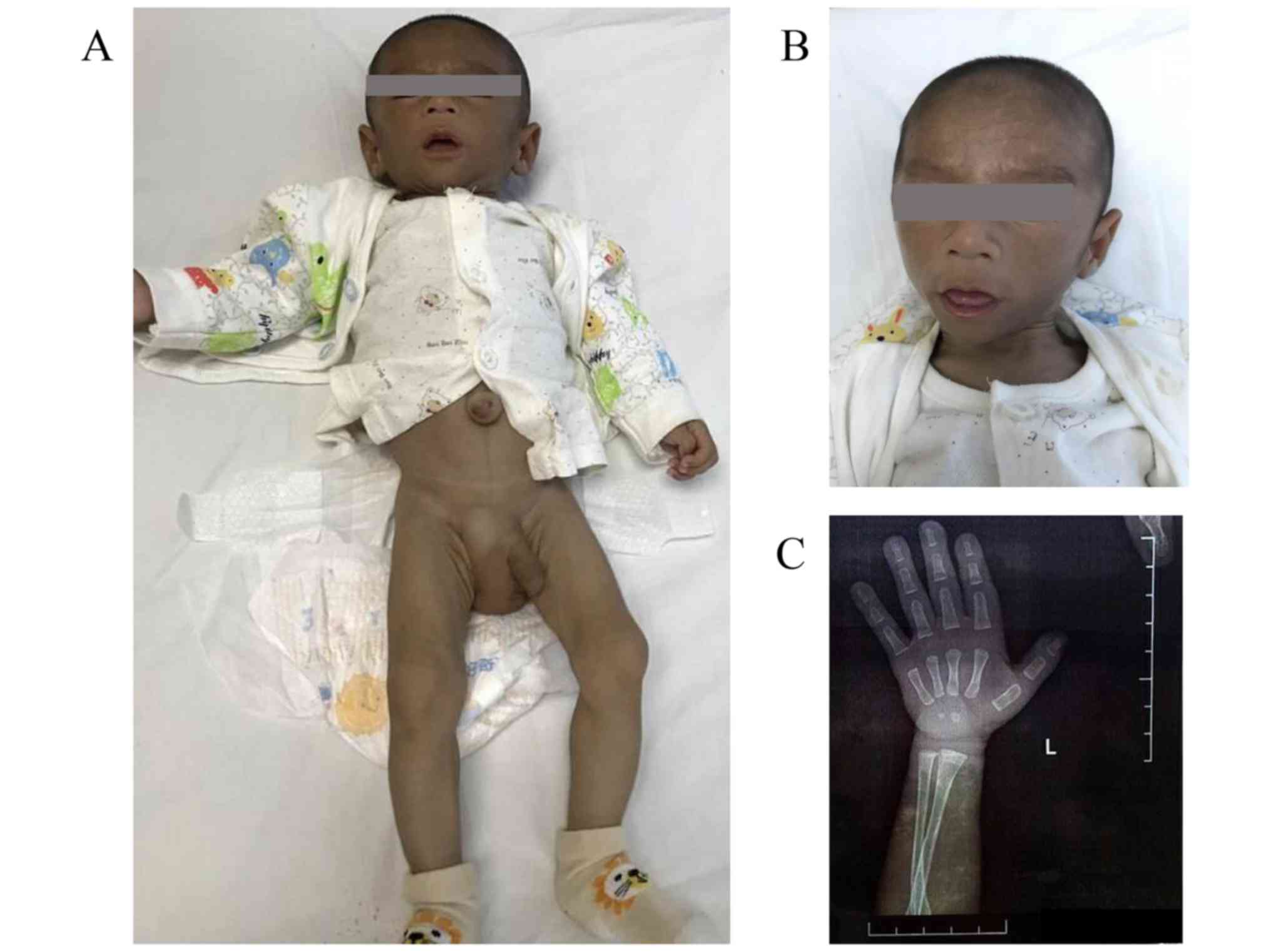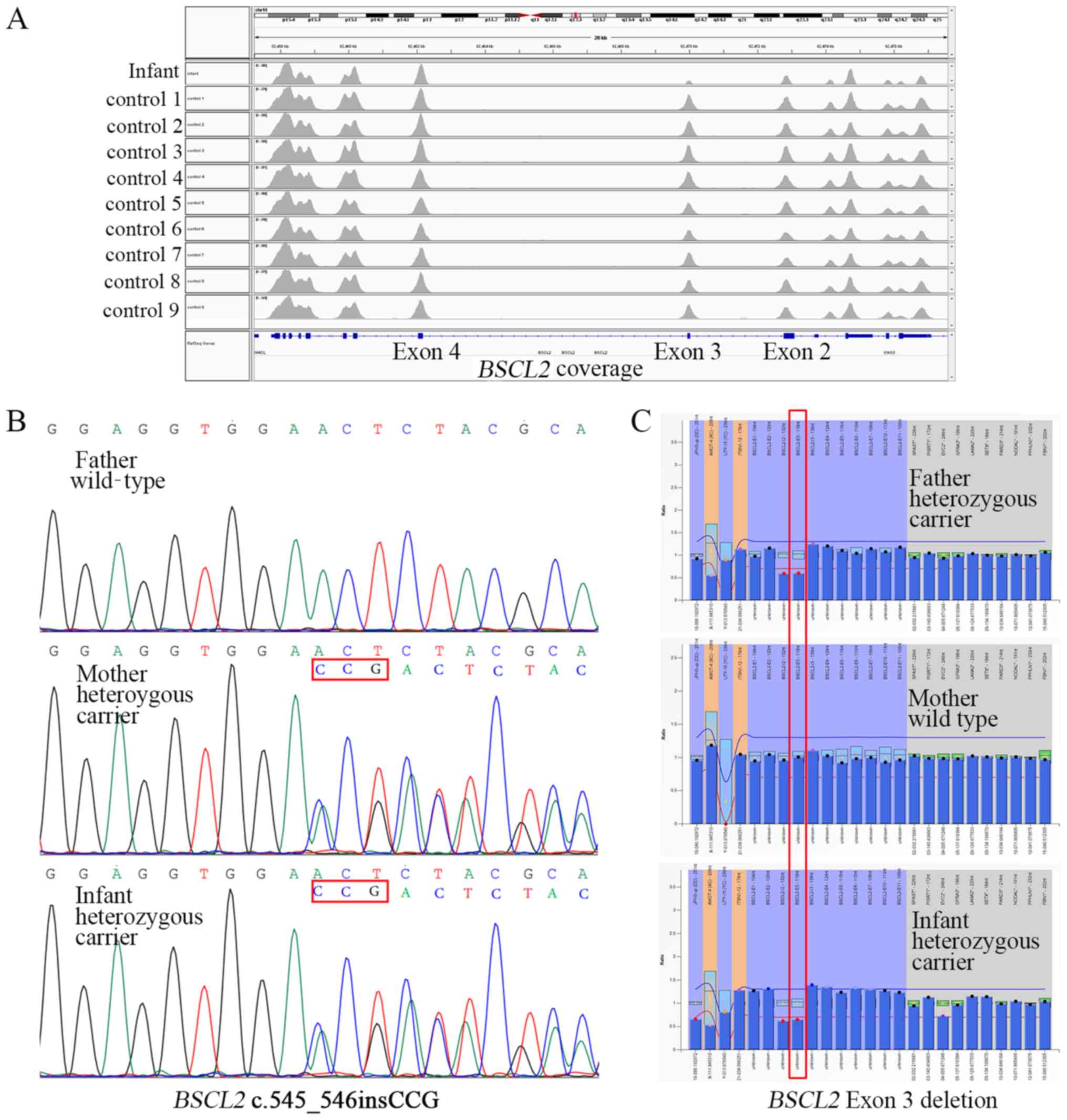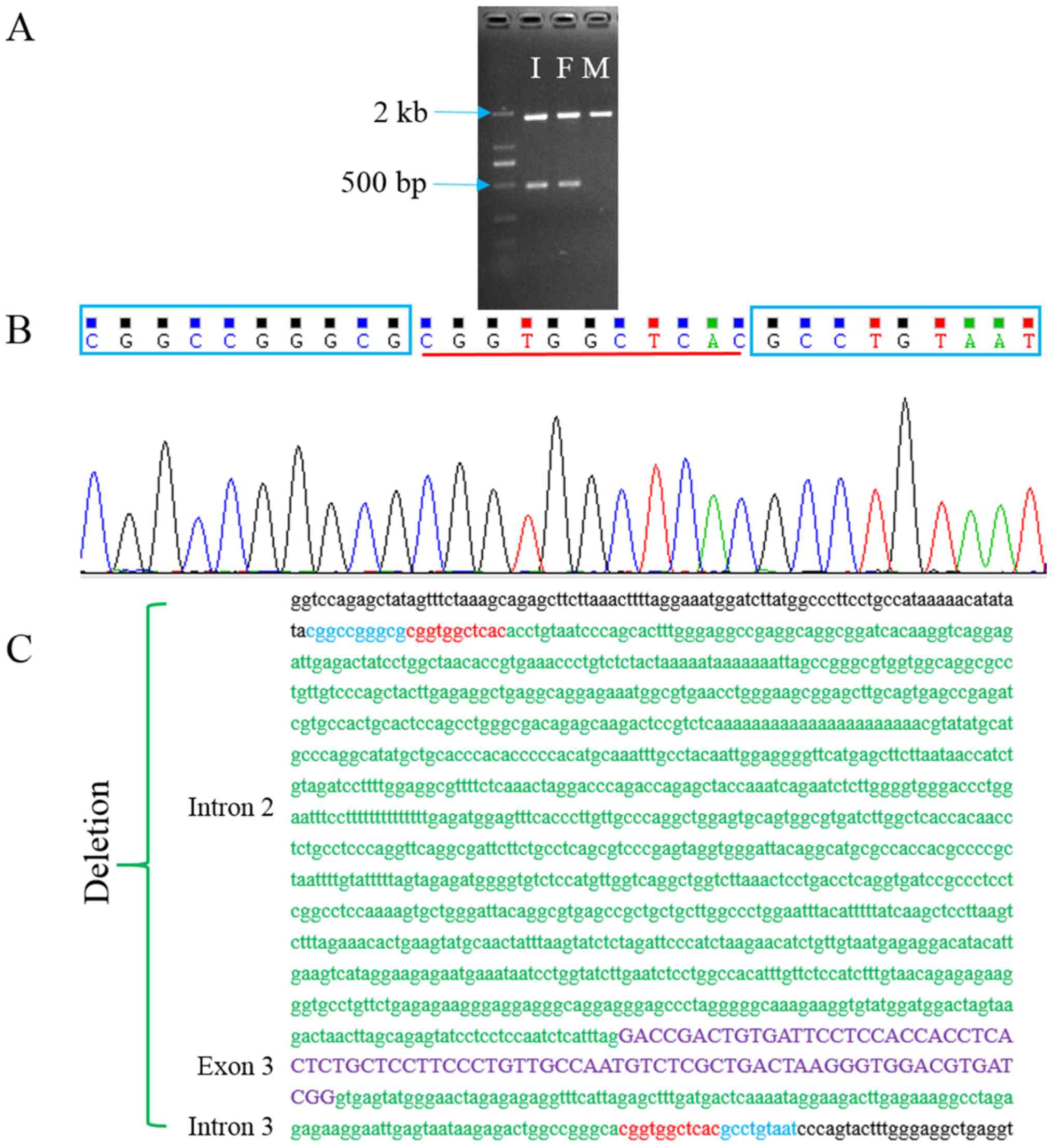|
1
|
Dantas de Medeiros JL, Carneiro Bezerra B,
Brito de Araújo TA, Craveiro Sarmento AS, de Azevedo Medeiros LB,
Peroni Gualdi L, Luna Cruz MDS, Xavier Nobre TT, Gomes Lima J and
Araújo de Melo Campos JT: Impairment of respiratory muscle strength
in Berardinelli-Seip congenital lipodystrophy subjects. Respir Res.
19:1732018. View Article : Google Scholar : PubMed/NCBI
|
|
2
|
Cheema HA, Malik HS, Waheed N, Mushtaq I,
Fayyaz Z and Anjum MN: Berardinelli-Seip Congenital Generalised
Lipodystrophy. J Coll Physicians Surg Pak. 28:406–408. 2018.
View Article : Google Scholar : PubMed/NCBI
|
|
3
|
Patni N and Garg A: Congenital generalized
lipodystrophies - new insights into metabolic dysfunction. Nat Rev
Endocrinol. 11:522–534. 2015. View Article : Google Scholar : PubMed/NCBI
|
|
4
|
Boutet E, El Mourabit H, Prot M, Nemani M,
Khallouf E, Colard O, Maurice M, Durand-Schneider AM, Chrétien Y,
Grès S, et al: Seipin deficiency alters fatty acid Delta9
desaturation and lipid droplet formation in Berardinelli-Seip
congenital lipodystrophy. Biochimie. 91:796–803. 2009. View Article : Google Scholar : PubMed/NCBI
|
|
5
|
Kim CA, Delépine M, Boutet E, El Mourabit
H, Le Lay S, Meier M, Nemani M, Bridel E, Leite CC, Bertola DR, et
al: Association of a homozygous nonsense caveolin-1 mutation with
Berardinelli-Seip congenital lipodystrophy. J Clin Endocrinol
Metab. 93:1129–1134. 2008. View Article : Google Scholar : PubMed/NCBI
|
|
6
|
Yao R, Zhang C, Yu T, Li N, Hu X, Wang X,
Wang J and Shen Y: Evaluation of three read-depth based CNV
detection tools using whole-exome sequencing data. Mol Cytogenet.
10:302017. View Article : Google Scholar : PubMed/NCBI
|
|
7
|
Purizaca-Rosillo N, Mori T, Benites-Cóndor
Y, Hisama FM, Martin GM and Oshima J: High incidence of BSCL2
intragenic recombinational mutation in Peruvian type 2
Berardinelli-Seip syndrome. Am J Med Genet A. 173:471–478. 2017.
View Article : Google Scholar : PubMed/NCBI
|
|
8
|
Lima JG, Nobrega LH, de Lima NN, do
Nascimento Santos MG, Baracho MF and Jeronimo SM: Clinical and
laboratory data of a large series of patients with congenital
generalized lipodystrophy. Diabetol Metab Syndr. 8:232016.
View Article : Google Scholar : PubMed/NCBI
|
|
9
|
Li H and Durbin R: Fast and accurate
long-read alignment with Burrows-Wheeler transform. Bioinformatics.
26:589–595. 2010. View Article : Google Scholar : PubMed/NCBI
|
|
10
|
Van der Auwera GA, Carneiro MO, Hartl C,
Poplin R, Del Angel G, Levy-Moonshine A, Jordan T, Shakir K, Roazen
D, Thibault J, et al: From FastQ Data to High Confidence Variant
Calls: The Genome Analysis Toolkit Best Practices Pipeline. Curr
Protoc Bioinformatics. 43:11.10.1–11.10.33. 2013.
|
|
11
|
Karczewski KJ, Francioli LC, Tiao G,
Cummings BB, Alföldi J, Wang Q, Collins RL, Laricchia KM, Ganna A,
Birnbaum DP, et al: Variation across 141,456 human exomes and
genomes reveals the spectrum of loss-of-function intolerance across
human protein-coding genes. bioRxiv. 5312102019.
|
|
12
|
Shen Y and Wu BL: Designing a simple
multiplex ligation-dependent probe amplification (MLPA) assay for
rapid detection of copy number variants in the genome. J Genet
Genomics. 36:257–265. 2009. View Article : Google Scholar : PubMed/NCBI
|
|
13
|
Liu Y, Li D, Ding Y, Kang L, Jin Y, Song
J, Li H and Yang Y: Further delineation of AGPAT2 and BSCL2 related
congenital generalized lipodystrophy in young infants. Eur J Med
Genet. 62:1035422019. View Article : Google Scholar : PubMed/NCBI
|
|
14
|
Su X, Lin R, Huang Y, Sheng H and Li X,
Ting TH, Liu L and Li X: Clinical and Mutational Features of Three
Chinese Children with Congenital Generalized Lipodystrophy. J Clin
Res Pediatr Endocrinol. 9:52–57. 2017. View Article : Google Scholar : PubMed/NCBI
|
|
15
|
Richards S, Aziz N, Bale S, Bick D, Das S,
Gastier-Foster J, Grody WW, Hegde M, Lyon E, Spector E, et al ACMG
Laboratory Quality Assurance Committee, : Standards and guidelines
for the interpretation of sequence variants: A joint consensus
recommendation of the American College of Medical Genetics and
Genomics and the Association for Molecular Pathology. Genet Med.
17:405–424. 2015. View Article : Google Scholar : PubMed/NCBI
|
|
16
|
Garg A and Misra A: Lipodystrophies: Rare
disorders causing metabolic syndrome. Endocrinol Metab Clin North
Am. 33:305–331. 2004. View Article : Google Scholar : PubMed/NCBI
|
|
17
|
Marchuk DS, Crooks K, Strande N,
Kaiser-Rogers K, Milko LV, Brandt A, Arreola A, Tilley CR, Bizon C,
Vora NL, et al: Increasing the diagnostic yield of exome sequencing
by copy number variant analysis. PLoS One. 13:e02091852018.
View Article : Google Scholar : PubMed/NCBI
|
|
18
|
Samarakoon PS, Sorte HS, Kristiansen BE,
Skodje T, Sheng Y, Tjønnfjord GE, Stadheim B, Stray-Pedersen A,
Rødningen OK and Lyle R: Identification of copy number variants
from exome sequence data. BMC Genomics. 15:6612014. View Article : Google Scholar : PubMed/NCBI
|
|
19
|
Tan R, Wang Y, Kleinstein SE, Liu Y, Zhu
X, Guo H, Jiang Q, Allen AS and Zhu M: An evaluation of copy number
variation detection tools from whole-exome sequencing data. Hum
Mutat. 35:899–907. 2014. View Article : Google Scholar : PubMed/NCBI
|
|
20
|
Miyatake S, Koshimizu E, Fujita A, Fukai
R, Imagawa E, Ohba C, Kuki I, Nukui M, Araki A, Makita Y, et al:
Detecting copy-number variations in whole-exome sequencing data
using the eXome Hidden Markov Model: An ‘exome-first’ approach. J
Hum Genet. 60:175–182. 2015. View Article : Google Scholar : PubMed/NCBI
|
|
21
|
Yao R, Yu T, Qing Y, Wang J and Shen Y:
Evaluation of copy number variant detection from panel-based
next-generation sequencing data. Mol Genet Genomic Med.
7:e005132019. View
Article : Google Scholar : PubMed/NCBI
|
|
22
|
Magré J, Delépine M, Khallouf E,
Gedde-Dahl T Jr, Van Maldergem L, Sobel E, Papp J, Meier M,
Mégarbané A, Bachy A, et al BSCL Working Group, : Identification of
the gene altered in Berardinelli-Seip congenital lipodystrophy on
chromosome 11q13. Nat Genet. 28:365–370. 2001. View Article : Google Scholar : PubMed/NCBI
|
|
23
|
Wee K, Yang W, Sugii S and Han W: Towards
a mechanistic understanding of lipodystrophy and seipin functions.
Biosci Rep. 34:342014. View Article : Google Scholar
|

















